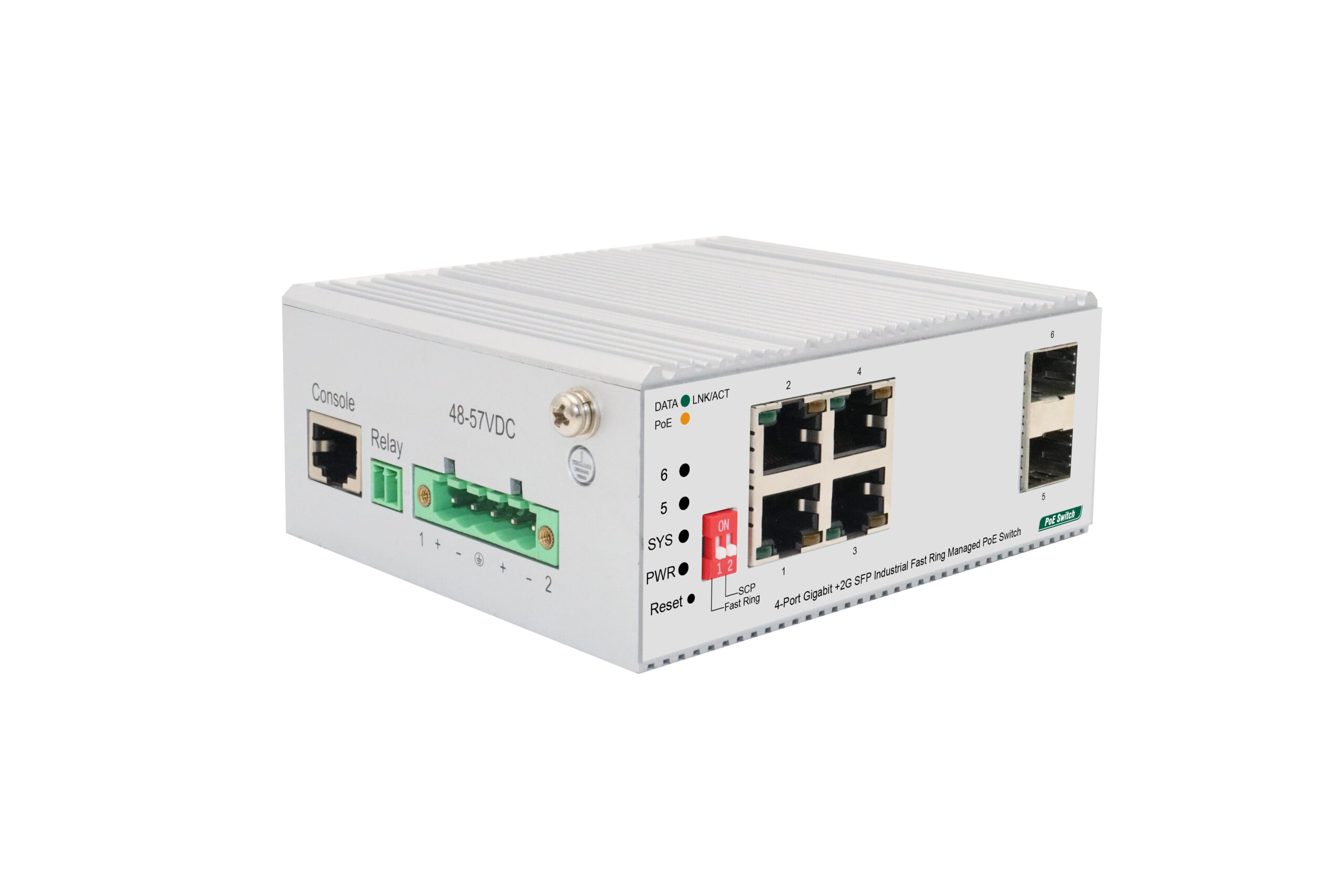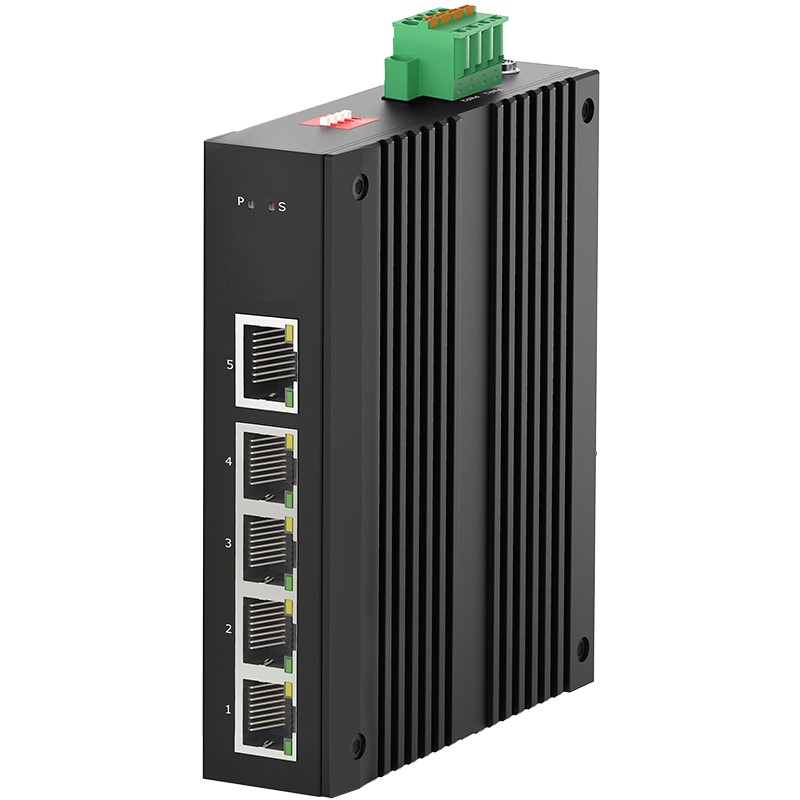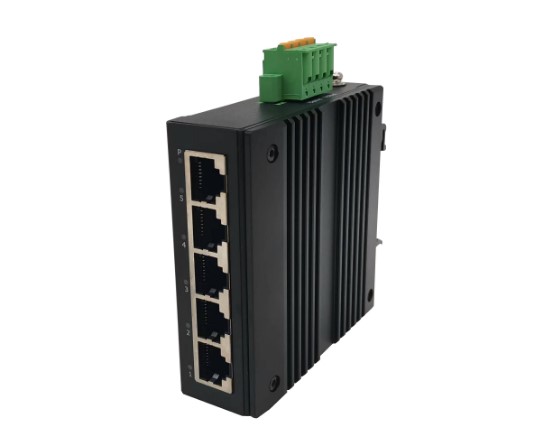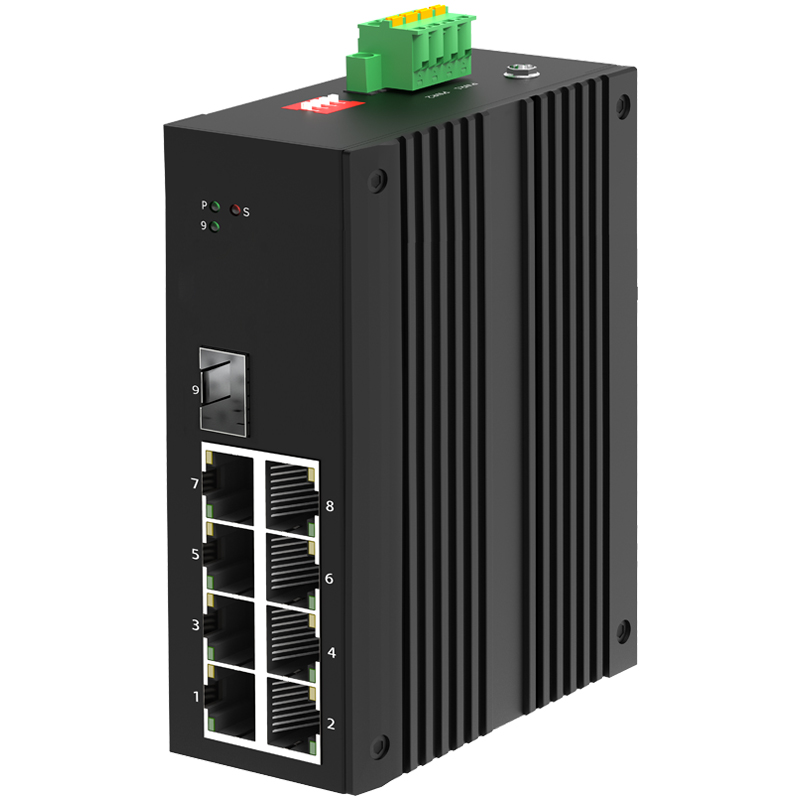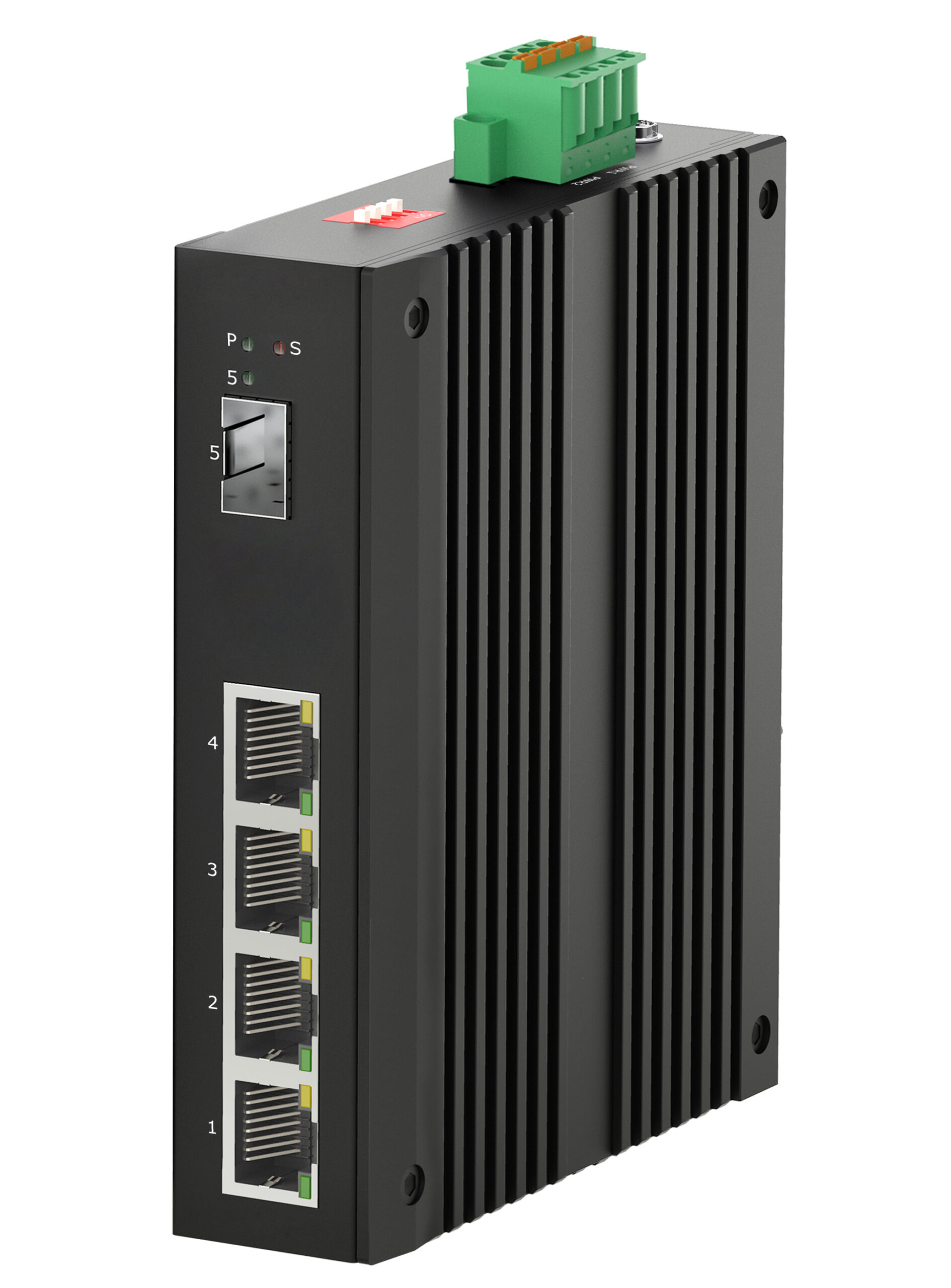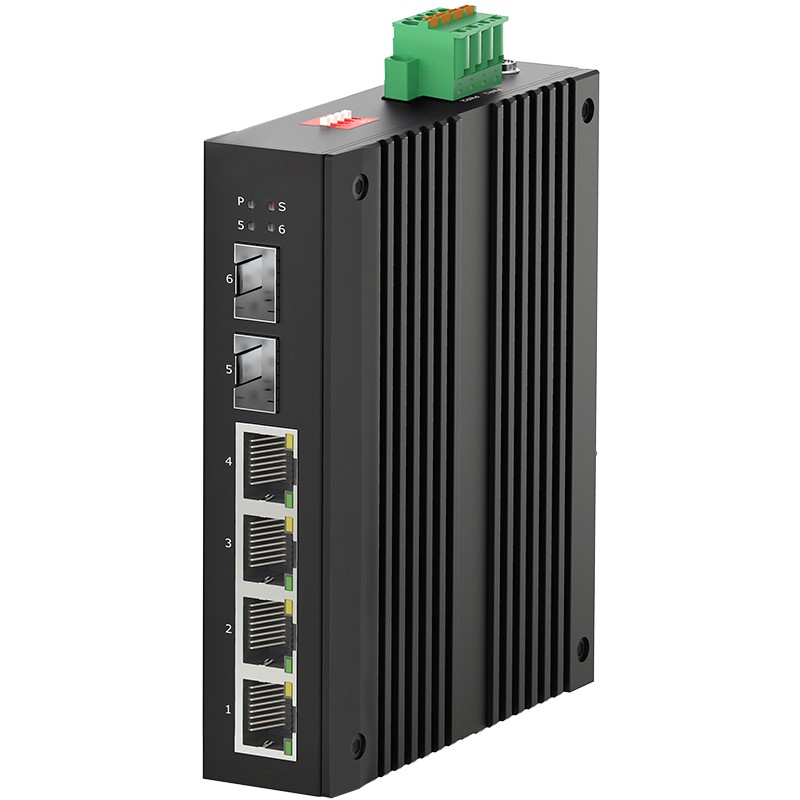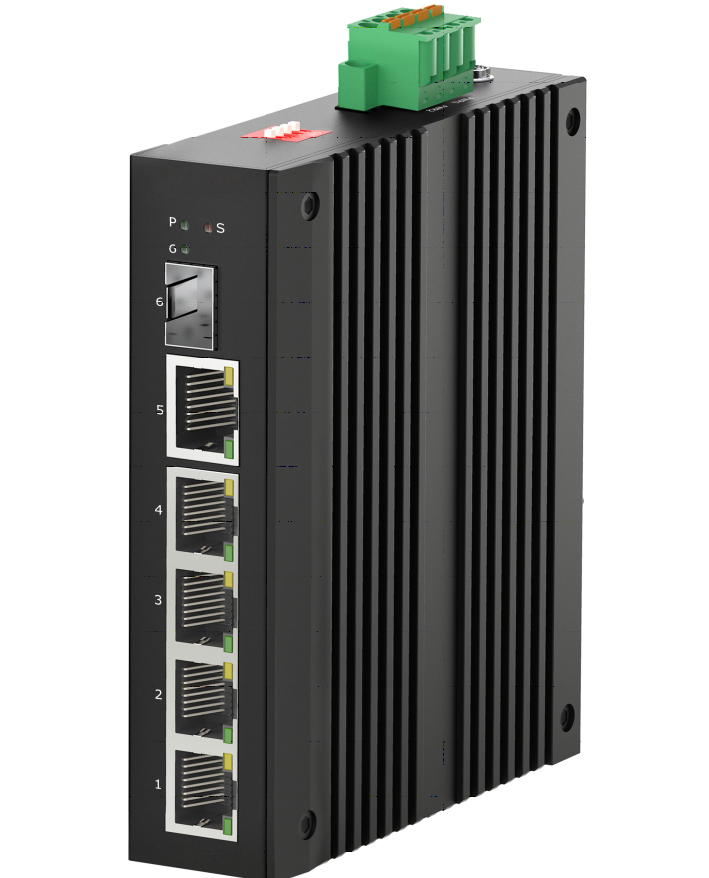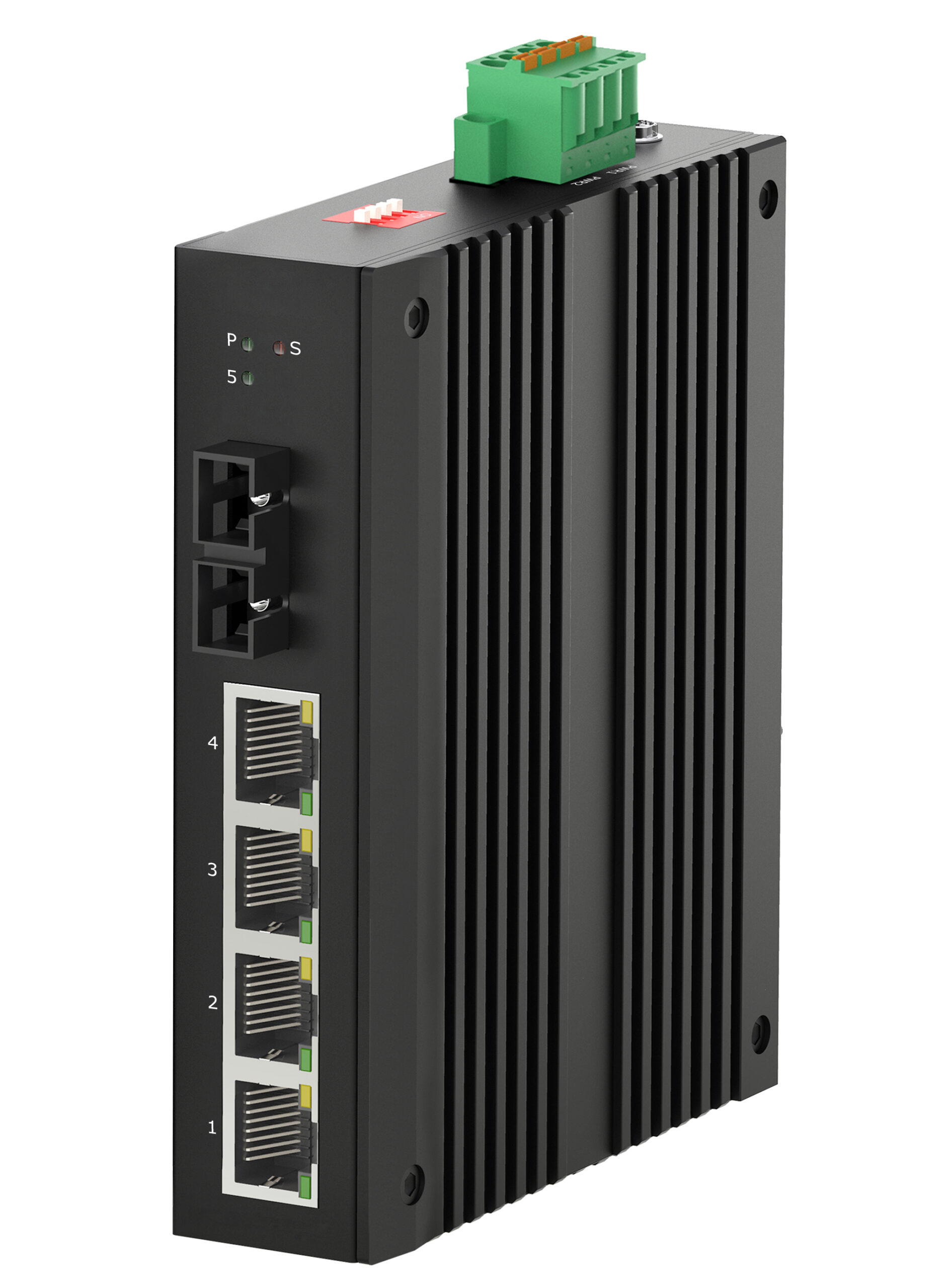Product
- Home
- Product
Discover your Perfect-fit Ethernet Switches
Ethernet Switches
Electroline Datacom’s Ethernet Switches series is designed to meet various networking demands with precision and efficiency. The series offers an enriching combination of extensive form factors, a range of interface types, and competitive pricing without compromising on quality. Our Ethernet switches stand out for their adaptability, robust software features, and widespread applications, tailoring solutions to your specific requirements.
- Diverse Form Factors and Rich Interface Options
- Advanced Software Capabilities with L2/L3 Features
- Competitive Pricing with Stable Quality and Wide Applications

ES4600-28X

ES4600-28X-P

ES5750-28X

ES5750-28X-P

ES5750-28F

SE5800-10P-P

ES5800-30X-P-SI
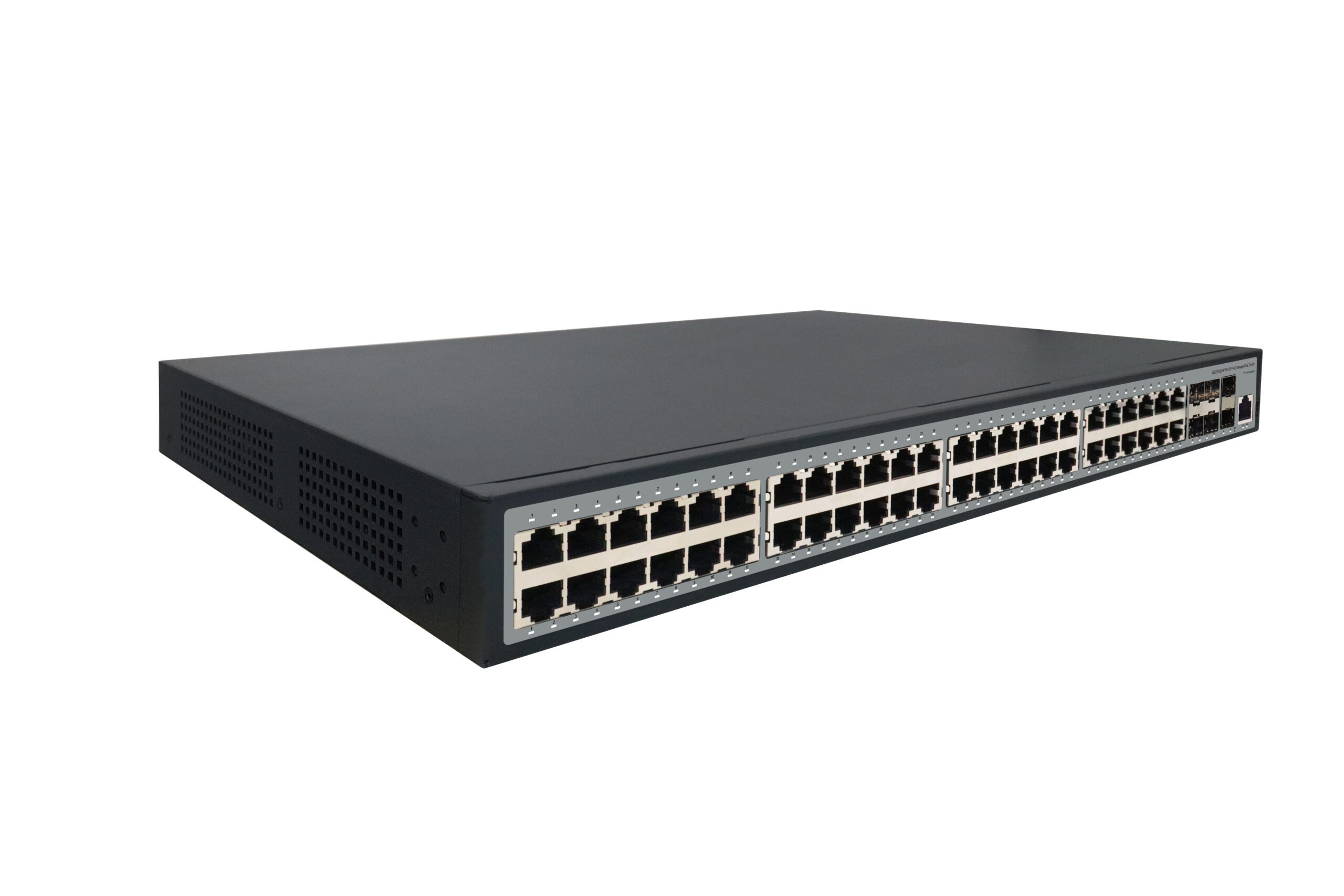
ES5950-54X
Smart LCD Switches
In the field of data communication, where efficiency and user-centric design are paramount, our new line of LCD-equipped switches offers a groundbreaking solution that meets the demands of today’s engineers.
- Real-Time Information Accessibility
- Simplified On-Site Configuration
- Cost-Efficient Innovation

ES4600D-10P-P-SI

ES4600D-20P-P-SI

SE4600D-28P-P-SI

ES4600D-10P-P-EI

ES4600D-20P-P-EI

ES4600D-28P-P-EI
Industrial Switches
In the relentless pursuit of innovation and efficiency, we proudly present our line of industrial switches, engineered to thrive in the most challenging outdoor data access environments. These switches embody our commitment to quality, resilience, and advanced functionality, ensuring seamless performance under various conditions.
- Robust Environmental Protection
- Advanced Software Functionality
- Versatile Design with PoE Support
Managed Industrial (PoE) Switch

IS2100-8GE4GF-P-SI

IS2100-8GE2GF-P-SI
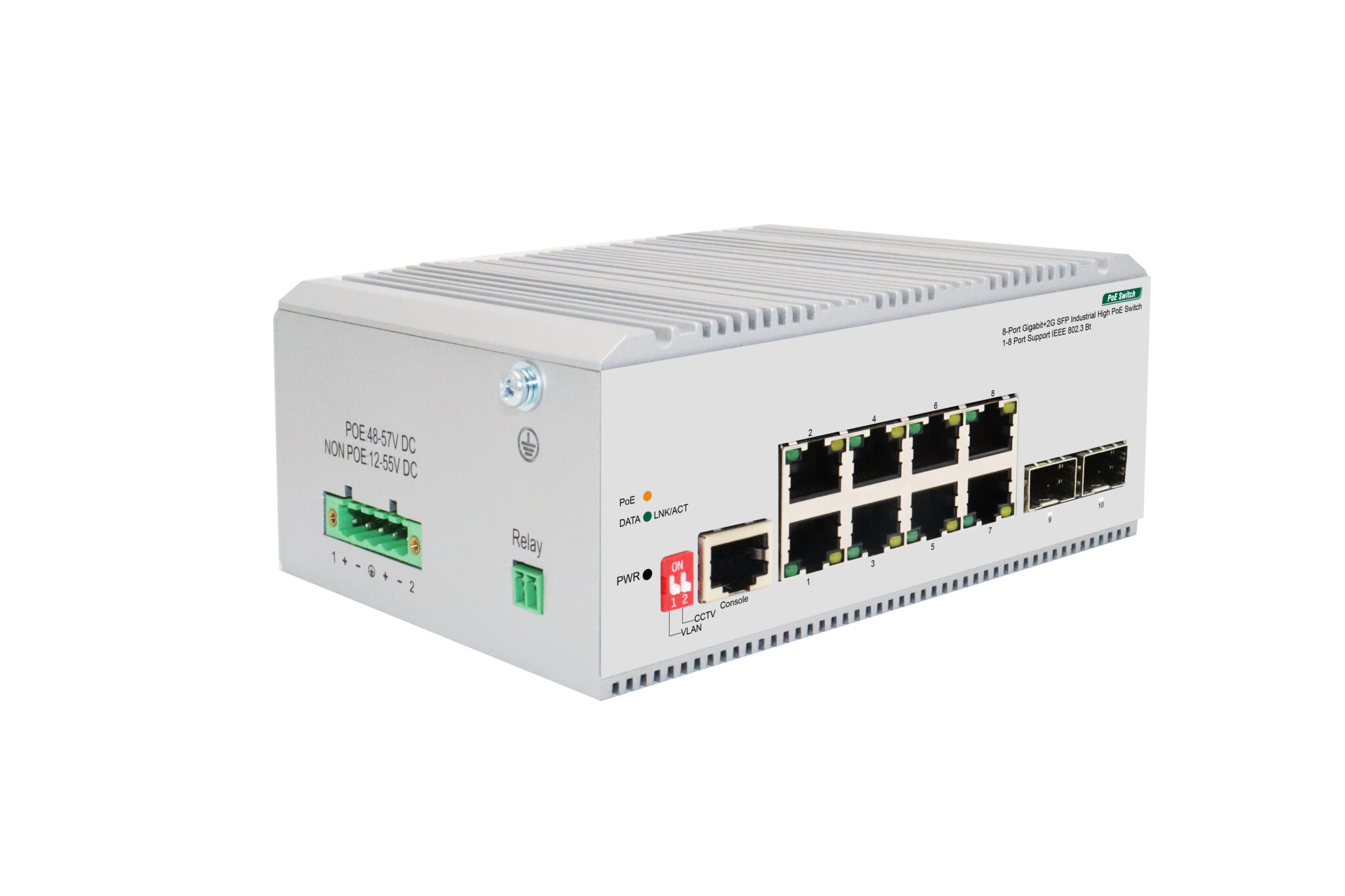
IS2100-8GE2GF-P-EI

IS2100-8GE4GC-P-SI

IS2100-8GE4GF-P-EI

IS2100-8GE12GF-P-SI

IS2100-8GE12GF-P-EI
Unmanaged Industrial (PoE) Switch
Selecting Ethernet Switches A Step-by-Step Guide to Smart Decisions
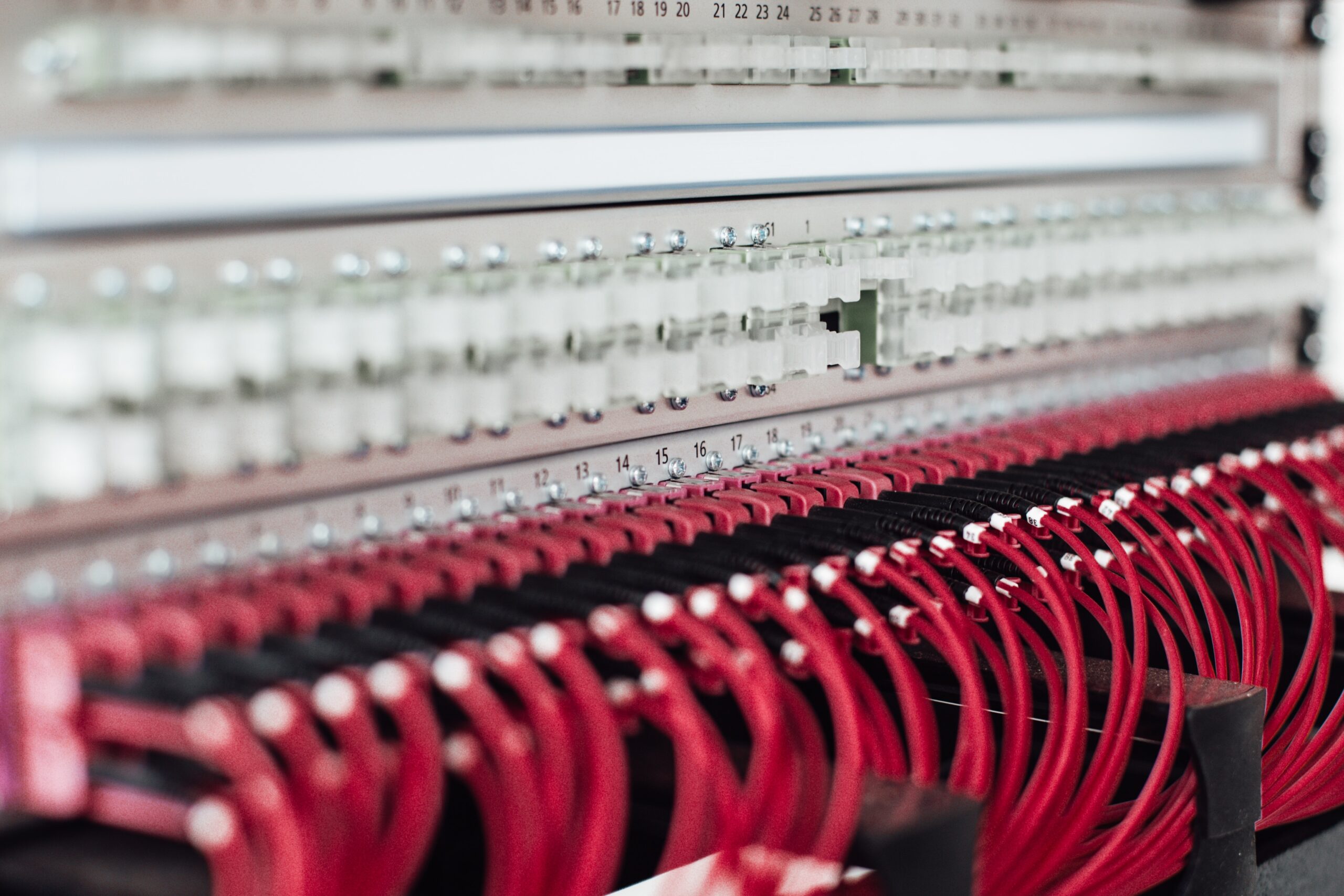
Selecting the right Ethernet switches is a crucial process that requires careful planning and informed decisions. It begins with a clear understanding of specific network needs and an assessment of current infrastructure.
- Identifying Needs: Determine network requirements and assess existing infrastructure.
- Network Planning and Design: Create a scalable and fault-tolerant network.
- Budgeting and Cost Analysis: Align costs with organizational objectives.
- Vendor and Product Selection: Emphasize technological advancement and support.
- Negotiation and Contracting: Secure the best terms.
- Implementation and Installation: Ensure minimal disruption.
- Training and Support: Prepare staff for success.
- After-Sales Service and Maintenance: Ensure ongoing support.
This guide outlines a general process for selecting Ethernet switches, serving as a foundational reference to align technical needs with business goals. If you have specific requirements, feel free to contact our network experts to obtain a customized solution.
Ethernet Switch Selection
A Practical Workflow and Notice
Ethernet switches are the backbone of a network, and choosing the right one is crucial for optimal performance. The following practical workflow, designed by Electroline Datacom, guides you through the selection process, ensuring that every decision aligns with your specific needs.
1.Identifying Needs and Network Planning
TARGET
Determination of network needs and requirements.
Assessment of existing infrastructure.
Creating a network topology that fits the organization’s goals,
selecting appropriate switches.
The Essential Questions to Consider
What are the specific requirements for the switches?
How many devices need to be connected?
How will the switches fit into the existing network architecture?
What is the scalability for future growth?
2.Budget,Vendor and Product Selection
TARGET
Estimating the cost of equipment,
installation, maintenance and support.
Researching and evaluating suppliers, products, R&D capabilities, technological advancement, and support.
The Essential Questions to Consider
What are the total costs, including hidden or unexpected costs?
How does the cost align with the budget?
What are the qualifications of the supplier?
How advanced is the technology?
What are the warranty and support terms?
Features in Every Scenario , We've Thought of It All for You
A Guide to Considerations for Operators, Enterprises, and Industrial Applications”
In today’s interconnected world, network switching plays a pivotal role in ensuring seamless communication and data exchange.
Catering to different sectors requires a nuanced understanding of their unique needs and challenges.
This guide aims to delve into the distinct considerations necessary for these three key sectors. By recognizing the specific requirements of operators, enterprises, and industrial settings, we provide insight and guidance to make informed decisions in the procurement and deployment of Ethernet switches. Whether it’s the scalability demanded by large operators, the security essential for enterprises, or the robustness required in industrial applications, this guide serves as a comprehensive roadmap to navigate the complexities of network switching tailored to your specific context.
1、Technical Considerations:
1.1 Performance Requirements:
- Access & Aggregation Switches:
- Throughput: Gigabit to 100 Gbps, port density, backplane capacity.
- Latency: Low latency measured in microseconds.
- Scalability: Modular design, support for VLANs, Multicast.
- Reliability and Quality:
- Redundancy: Hot-swappable components, dual power supplies.
- Durability: MTBF statistics, IEEE, ISO standards.
- Standards Compliance: Certifications like CE, FCC, RoHS.
1.2 Security:
Access Switches:
- ACLs: Rules for traffic, extended/standard ACLs.
- QoS: DSCP or 802.1p, traffic policing, priority queuing.
- IGMP: IGMP Snooping, version compatibility.
- Port Security: MAC address limiting, dynamic VLAN assignment.
- Guest Networking: Isolated VLANs for guests.
- Energy Efficiency: IEEE 802.3az, PoE capabilities.
Aggregation Switches:
- ACLs: Granular and time-based ACLs.
- QoS: HQoS, congestion management, SLA monitoring.
- IGMP: IGMP Querier, filtering, and throttling.
- Virtualization Support: MPLS, VRF, virtual switch stacking.
- Redundancy and Resiliency: Link Aggregation, Graceful Restart.
- Traffic Engineering: MPLS TE, Bandwidth Reservation.
1.3 Cost Efficiency:
- Initial Costs: Unit cost, bundle pricing.
- Operational Costs: Energy efficiency, maintenance, licensing.
1.4 Support and Services:
- Technical Support: 24/7 availability, response time guarantees.
- Warranty and Service Agreements: Warranty terms, SLAs.
1.5 Common Features:
- Network Automation and Programmability: SDN support, APIs.
- Real-Time Analytics and Reporting: Deep packet inspection, real-time alerts.
- IPv6 Support: Native support, transition technologies.
- Cloud Integration: Hybrid cloud support, integration with cloud services.
- Compliance and Certifications: Regional and industry-specific compliance.
- Future-Proofing: Modularity, alignment with emerging technologies.
- Enhanced Security Measures: Integrated firewall, IDS/IPS, Secure Boot.
2.Non-Technical Considerations
2.1. Vendor Reputation and Reliability
- Track Record: Experience with similar solutions.
- References: Testimonials, case studies.
2.2 Cost Considerations
- Total Cost of Ownership (TCO): Including all costs.
- Financing Options: Flexible payment terms.
2.3. Support and Services
- Post-Sale Support: Technical support, SLAs.
- Training and Education: On-site/remote training.
- Customization and Integration Services: Tailoring products.
2.4. Compliance and Certifications
- Regulatory Compliance: Adherence to regulations.
- Industry Standards and Certifications: Compliance with standards.
2.5. Sustainability and CSR
- Environmental Impact: Energy efficiency, recyclability.
- Social Responsibility Initiatives: Community engagement, ethical practices.
2.6. Strategic Alignment
- Future Roadmap: Alignment with long-term strategy.
- Partnership Opportunities: Long-term collaboration.
2.7. Supply Chain and Logistics
- Supply Chain Transparency: Visibility into processes.
- Delivery and Logistics: Lead times, shipping costs.
2.8. Risk Mitigation
- Warranty and Guarantees: Product warranty terms.
- Disaster Recovery Planning: Backup systems support.
2.9. Cultural and Geographical Considerations
- Cultural Alignment: Alignment with local culture.
- Local Presence: Local sales, support, and service centers.
1.Technical Factors
1.1. Performance
- Throughput: Enterprise customers will look for switches that can handle data rates suitable for their network size, ranging from 1 Gbps to 100 Gbps or more.
- Scalability: Customers will seek solutions that can grow with the company, allowing for increased user counts, devices, and data volume.
- Latency: Minimal delay is essential, especially for applications such as VoIP and video conferencing that require real-time data processing.
1.2. Reliability
- Redundancy: Features like dual power supplies, hot-swappable components, and redundant paths ensure uptime and business continuity.
- Quality of Service (QoS): Ensuring priority handling for mission-critical business applications can be essential, including traffic shaping, policing, and bandwidth management.
1.3. Security
- Access Control Lists (ACLs): Granular control over traffic flow based on source, destination, and type of traffic allows strict security enforcement.
- Encryption: End-to-end encryption may be required to protect sensitive data from unauthorized access or eavesdropping.
1.4. Manageability
- Remote Management: SNMP, CLI, and web-based interfaces provide flexibility in network administration.
- Automation and Programmability: APIs, scripting capabilities, and SDN support help automate routine tasks and enable integration with other systems.
1.5. Features and Functions
- Power over Ethernet (PoE): Useful for powering devices like security cameras, Wi-Fi access points, and IP phones.
- Virtual LANs (VLANs): Allows for efficient network segmentation, improving security and organizational efficiency.
1.6. Compatibility
- Interoperability: Compatibility with existing hardware and software, including third-party products, ensures a seamless integration.
- Standards Compliance: Adherence to IEEE standards ensures reliability and broad compatibility.
2、Non-Technical Factors
2.1. Cost Considerations
- Total Cost of Ownership (TCO): A comprehensive view of costs, including hardware, support, energy consumption, and maintenance.
- Licensing Fees: Understanding any recurring costs for additional features or software subscriptions.
2.2. Vendor Reputation and Support
- Vendor Stability and Reputation: Researching vendor history, customer reviews, and financial stability to ensure a reliable partnership.
- Warranty and Service Agreements: Understanding the terms of warranty, service level agreements (SLAs), and availability of support services.
2.3. Business Alignment
- Fit with Business Objectives: Selecting products that align with overall business strategies, growth plans, and sector-specific needs.
- Compliance and Regulations: Ensuring compliance with legal and regulatory requirements, such as GDPR for data protection or HIPAA for healthcare.
2.4. Ease of Use
- User-Friendly Interfaces: Graphical interfaces and intuitive design to simplify administration and reduce training needs.
- Training and Documentation: Access to training materials, documentation, and community support for smooth operation and troubleshooting.
2.5. Sustainability and CSR
- Energy Efficiency: Products with energy-saving features and certifications like Energy Star can be more appealing.
- Company Ethics and Sustainability Practices: Vendor alignment with corporate values, ethics, and sustainability goals.
2.6. Availability and Lead Time
- Delivery Timeframes: Understanding lead times and availability for procurement to match project timelines.
- Local Support: Having local sales and technical support ensures quicker response and familiarity with regional requirements.
2.7. Scalability and Future Growth
- Upgrade Paths: Ensuring that the chosen product allows for future expansion, with modular designs and options for additional functionality.
- Integration with Future Technologies: Readiness for emerging technologies like IoT and cloud services ensures long-term viability.
1.Technical Factors
1.1 Environmental Durability
Temperature Range: Operating in extreme temperatures, ranging from -40°C to +75°C or more.
Humidity, Dust, and Water Resistance: Compliance with standards like IP67.
Shock and Vibration Resistance: Endurance against mechanical stresses.
Lightning and Surge Protection: Must meet specific anti-lightning standards to protect against electrical surges.
Electromagnetic Compatibility (EMC): Compliance with EMC standards to minimize interference with other electronic devices.
1.2. Performance
Throughput and Latency: Adequate data rates and minimal delays to support industrial protocols and applications.
1.3. Reliability
Redundancy and Failover: Redundant power supplies, links, and ring topologies.
MTBF (Mean Time Between Failures): Long life and reduced maintenance.
1.4. Security
Robust Security Protocols: Enhanced security measures for industrial settings.
Access Control and Segmentation: ACLs and VLANs for secure access control.
1.5. Network Management
Industrial Protocols Support: Compatibility with Modbus, PROFINET, EtherCAT, etc.
Remote Monitoring and Diagnostics: Remote management tools.
1.6. Connectivity
Port Types and Counts: A mix of copper, fiber, PoE, and specific industrial interfaces like serial ports, RS485, etc.
Wireless Options: Support for wireless connectivity if needed.
2.Non-Technical Factors
2.1. Cost Considerations
Acquisition and Operational Costs: Upfront costs plus ongoing expenses.
ROI Considerations: Potential return on investment.
2.2. Vendor Relationship
Vendor Expertise in Industrial Solutions: Proven industrial-grade products and solutions.
Support and Warranty: Comprehensive support and warranty.
2.3. Compliance and Standards
Regulatory Compliance: Adherence to industrial regulations like IEC, ISO.
Certifications: Quality and safety certifications like CE, UL.
2.4. Scalability and Future-Proofing
Scalability: Ability to adapt to growing demands.
Integration with Other Systems: Compatibility with existing industrial equipment.
2.5. Availability
Product Availability and Lead Time: Timely availability.
Local Distributors and Support: Quick response and parts availability.
2.6. Social Responsibility and Sustainability
Environmental Impact: Energy efficiency and environmental consciousness.
Ethical Considerations: Alignment with corporate values and ethics.
11 Suggestions to Select the Right Ethernet Switch
Navigating the complexity of choosing an Ethernet switch demands a strategic approach.
This guide delineates an 11-step process to simplify the selection process for different applications.
From understanding specific technical requirements to evaluating brands, cost factors, vendor support, scalability, and ethical considerations, it covers the essential aspects that decision-makers must consider.
Emphasizing long-term adaptability and resilience, this guide aims to assist professionals in making an informed selection, ensuring alignment with organizational goals, compliance standards, and future growth.
Whether it’s a matter of compatibility or environmental sustainability, this article provides the tools to choose the right Ethernet switch with confidence and clarity.
Gain In-Depth Insight into Ethernet Switch Selection?
3.Suggestion to Negotiation,Contract and Implementation
During the stages of price negotiation, contract signing, and implementation, we offer the following recommendations for your reference.
The procurement of Ethernet switches moves into decisive phases once the products are selected. These phases shape the success of the entire process and establish the foundation for a long-term business relationship.
Price Negotiation: This stage involves in-depth dialogue to reach a fair and transparent pricing structure, considering aspects like volume discounts, value-added services, and payment terms. A successful negotiation aligns the interests of both parties, balancing cost-efficiency with value.
Contract Signing: The contract encapsulates all agreed-upon terms, from product specifications to delivery timelines, warranty, and legal compliance. It’s a legal commitment that requires meticulous attention to detail to safeguard the interests of both buyer and supplier.
Implementation: This phase includes the delivery, installation, and integration of the switches. Coordination, quality assurance, training, and ongoing support are key aspects to ensure that the products seamlessly integrate into the existing infrastructure and perform to expectations.
Price negotiation is a delicate and vital phase in the procurement process. Key considerations during this stage include:
- Understanding Market Rates: A clear understanding of the market price for the selected switches will provide a solid foundation for negotiation.
- Volume Discounts: Consider potential discounts based on the order quantity or bundled services.
- Value-Added Services: Negotiate for additional services or support that might be included within the agreed price.
- Payment Terms: Clearly define the payment schedule and any potential terms for early payment discounts or penalties for late payment.
- Transparency and Integrity: Maintain a transparent and ethical approach throughout the negotiations to foster long-term relationships.
Contract signing formalizes the agreement and lays the legal foundation for the relationship between buyer and supplier. Considerations include:
- Clear Specifications: Ensure that the contract clearly defines the products, quantities, specifications, and any agreed-upon special terms.
- Delivery Schedule: Detail the expected delivery timeline, including any phased deliveries if applicable.
- Warranty and Support: Outline the warranty terms, support services, and any ongoing maintenance or updates included.
- Termination Clauses: Include clear provisions for resolving disputes and handling potential termination of the contract.
- Legal Compliance: Ensure that the contract complies with all relevant local and international laws and regulations, possibly involving legal consultation.
The implementation stage involves the actual delivery, installation, and integration of the switches. Key aspects to consider include:
- Coordination and Communication: Establish clear lines of communication between the supplier, installation team, and internal stakeholders.
- Installation Schedule: Plan the installation to minimize disruption, considering any necessary downtime or phased rollouts.
- Training and Documentation: Ensure that relevant team members are trained on the new switches, and that proper documentation is provided.
- Quality Assurance and Testing: Conduct thorough testing to ensure that the switches meet all performance and functionality requirements.
- Ongoing Support and Monitoring: Set up a clear process for ongoing support, monitoring, and updates, aligned with the supplier’s commitments.
4.Trainning, Support and After-sales service
The after-sales phase is a critical part of the customer journey that extends beyond the purchase of industrial switches. It encompasses training, support, and post-sale support stages, each with distinct considerations to ensure a seamless experience and long-term satisfaction. Here’s a detailed breakdown of what customers need to pay attention to in these stages.
Trainning
- Leveraging Manufacturer or Agent Training Opportunities: Look for centralized offline training in physical labs provided by manufacturers or agents.
- Understanding Training Content: Align the training with the team’s needs, covering both basic and advanced functionalities.
- Participation and Engagement: Encourage active participation with hands-on exercises.
- Access to Training Materials: Request ongoing access to training materials and resources.
- Feedback and Queries: Provide feedback and ask questions to clarify uncertainties.

Support
- Understanding Support Channels: Familiarize yourself with the available support channels.
- Clear Communication of Issues: Communicate any technical issues clearly.
- Awareness of SLAs: Be aware of the Service Level Agreements (SLAs).
- Utilization of Self-Service Resources: Utilize self-service resources like FAQs or online guides.

After-sales service
- Maintaining Open Communication: Keep open communication with the supplier.
- Understanding Warranty and Maintenance Terms: Understand the terms of warranty and maintenance.
- Monitoring Product Performance: Monitor the performance of the switches with SNMP protocol.
- Exploring Additional Offerings: Stay informed about additional offerings or software programs.
- Product Upgrades and Updates: Stay informed about product upgrades

5.The Common Pitfalls When Purchasing
Selecting the right data communication products, such as switches, is a crucial yet complex task. Choices must go beyond price or brand recognition and consider factors like compatibility, scalability, support, and total cost of ownership. Understanding the common mistakes in the selection process can guide buyers to make more informed and effective decisions. From ignoring the role of agents to over-relying on well-known brands, awareness of these pitfalls can lead to better alignment with business needs and long-term success. Below are the listed common pitfalls, please use them as a reference.
- Price Equals Performance
- One Size Fits All
- Ignoring Scalability
- Overlooking Security Features
- Disregarding Redundancy Needs
- Ignoring Management Capabilities
- Misunderstanding PoE Requirements
- Neglecting Energy Efficiency
- Using Standard Ethernet Switches in Outdoor Data Connections
- Ignoring Vendor Reputation and Support
Protect Your Investment: Discover the 10 Traps in Switch Selection
Navigating the complexities of network switch selection can be a daunting task. Missteps can lead to costly errors and compromised performance. That’s why we’ve prepared an essential 10-point guide to help you make informed decisions.
Simply register. Avoid common pitfalls and build a resilient, future-ready network.

From Selection to Satisfaction
A Brief Self-Nomination,Why Choose Electroline Datacom?

Quality Assurance: Our switches are built with meticulous engineering and rigorous testing to ensure they meet and exceed industry standards.
Scalability: With both fixed and modular options, our switches provide flexibility and scalability to grow with your business.
Innovative Features: Our switches are equipped with the latest technology, such as advanced PoE capabilities, Layer 2 and 3 support, and robust security features.
Responsive Support: With local sales in a dozen countries and R&D centers in Canada and China, we provide quick responses to customer needs and tailor solutions according to demand.
Cost-Effectiveness: Leveraging our intelligent manufacturing factory, we offer competitive pricing without compromising on quality and features.
Know More About Electroline Datacom
Please note that the final cost depends on the customized service you require, the specifications of the raw materials used, the relevant national laws, and the distance of transportation. Take the example of booking a tall container of products:

Electroline: Adapting to the IP Era with Competitive Solutions
Electroline, with 70 years of technical innovation, has strategically transitioned into the IP era by adapting to the global demand for IP-based solutions. Through a combination of deep technical understanding, collaboration with Chinese partners, and the establishment of R&D centers in Canada and China, the company offers competitive products for operators, enterprise networks, and industrial clients. Electroline’s thoughtful approach, without overstating its role, positions it as a significant player in the IP landscape, ready to embrace the future with cutting-edge solutions.

Electroline’s Innovative Journey in Ethernet Switch Development
Electroline is at the forefront of Ethernet switch development, offering a diverse range of products tailored for various applications. Our portfolio includes feature-rich Layer 2 and Layer 3 switches for operators and ISPs, innovative SmartPanel switches with LCD panels for enterprises, and robust industrial switches for IIoT. With a vision towards the future, we are focusing on developing data center switches based on the SONiC platform. Electroline’s commitment to innovation and customer needs continues to drive our growth and success in the competitive data communication landscape.

Hello Data Communication World
Electroline Datacom, with 70 years of history, now ventures into the data communication field with a mission to “Empower Data Communications.” The company’s products, including those for operators, ISPs, enterprises, and industrial customers, reflect a commitment to innovation in IP technology. With a responsive approach and a vision for ‘Everything over IP,’ Electroline Datacom aims to foster global connectivity and convenient communication.

The Innovation of Convenience: Introducing Switches with LCD Screens
In the ever-evolving world of data communication, the search for efficiency and user-friendly experience remains a constant pursuit. While the core components of Ethernet switches, such as the chipset and software functionalities, have reached a level of standardization, there’s still room for innovation in design and user interaction. That’s where our new line of switches with LCD screens comes in.
Your Concerns, Our Answers
What sets Electroline Datacom's Ethernet switches and routers apart from competitors?
Response: Electroline Datacom's Ethernet switches and routers are engineered with cutting-edge technology, offering unparalleled performance, reliability, and security. With R&D centers in Canada and China, we're at the forefront of innovation, ensuring our products meet the highest standards. Our intelligent manufacturing factory allows us to flexibly produce according to demand, ensuring cost-effectiveness without compromising quality.
How does Electroline Datacom ensure rapid response and understanding of customer requirements?
Electroline Datacom's local sales or partners presence in over a dozen countries enables us to quickly respond to customers and understand their unique needs. Our R&D centers work closely with customers, adapting to market trends and developing solutions that align with their specific requirements. Our commitment to customer-centric innovation ensures that we're always ready to meet and exceed expectations.
Can Electroline Datacom provide customized solutions according to specific business needs?
Absolutely! Electroline Datacom specializes in tailoring solutions to meet individual business needs. Our intelligent manufacturing factory and strong R&D capabilities enable us to design and produce customized Ethernet switches, routers, and wireless communication equipment. We work collaboratively with our customers to understand their unique challenges and deliver solutions that provide a competitive edge.
What kind of support and warranty does Electroline Datacom offer for its products?
Electroline Datacom offers comprehensive support and warranty options for our products. Our dedicated support team provides timely assistance for troubleshooting, maintenance, and technical inquiries. We stand behind our products with robust warranty policies, reflecting our confidence in the quality and durability of our offerings. Our goal is to ensure complete customer satisfaction and peace of mind.
Where can I find Electroline Datacom's product specifications, manuals, and technical support?
Electroline Datacom's product specifications, manuals, and technical support resources are readily available on our website. We provide detailed datasheets, user guides, and online support channels to assist you with all your product-related needs. Our technical support team is also available to provide personalized assistance, ensuring you have all the information and support you need. Just press contact us!
What regions does Electroline Datacom serve, and how can I contact the local sales team?
Electroline Datacom serves various regions including Germany, UK, France, UAE, Turkey, Indonesia, Malaysia, Canada, USA, and Brazil. Our local sales teams are strategically positioned to provide prompt and personalized service. You can find contact information for the local sales team in your region on our website or reach out to our global headquarters for assistance.
How does Electroline Datacom's intelligent manufacturing factory ensure quality and flexibility?
Electroline Datacom's intelligent manufacturing factory leverages advanced automation and quality control processes to produce top-tier products. Our flexible manufacturing capabilities enable us to adapt to specific customer demands, producing customized solutions without sacrificing quality or efficiency. This unique combination of quality assurance and flexibility sets us apart in the industry.
What types of wireless communications and 5G CPE equipment does Electroline Datacom offer?
Electroline Datacom offers a wide range of wireless communications and 5G CPE equipment designed for various applications and industries. Our products are built with the latest technology, ensuring high-speed connectivity, robust performance, and seamless integration with existing networks. Whether you need solutions for industrial environments or advanced 5G connectivity, we have the products to meet your needs.
How can I become an agent or distributor for Electroline Datacom products?
Becoming an agent or distributor for Electroline Datacom is a rewarding opportunity. We provide comprehensive support, training, and marketing assistance to our partners. If you're interested in representing our cutting-edge products, please reach out to our partnership team through our website. We look forward to collaborating with you and growing together in the market.
Are there any case studies or success stories showcasing Electroline Datacom's solutions in action?
Yes, Electroline Datacom has a rich portfolio of case studies and success stories that showcase our solutions across various sectors. From optimizing network performance for large enterprises to providing robust connectivity for industrial applications, our products have proven their worth time and again. You can explore these success stories on our website to see firsthand how Electroline Datacom's solutions drive tangible results.

